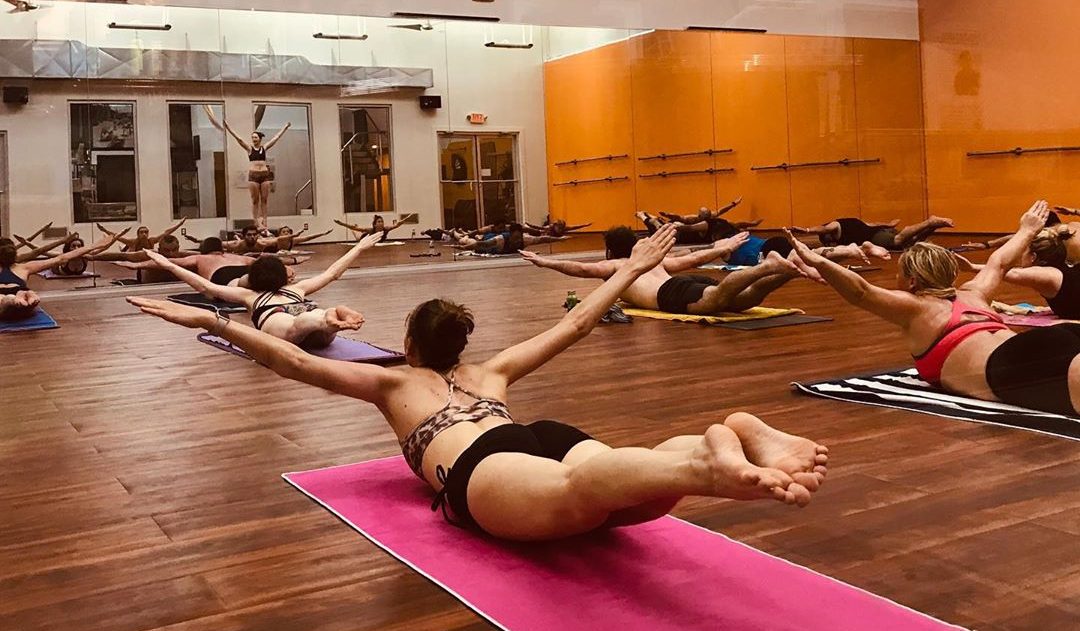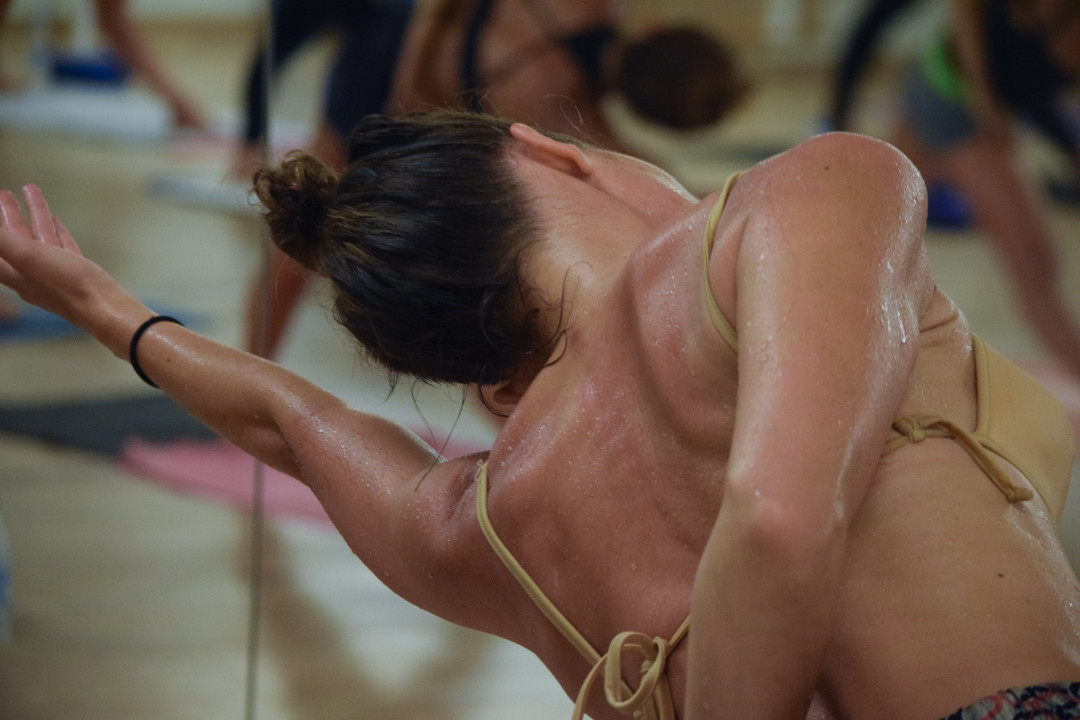Bikram yoga
Looking for information about Bikram Yoga or Hot Yoga? Wondering if this type of yoga is for you? What is its history? Is it easy to practice? Are there any risks? Today I will explain everything you need to know about this type of yoga.
Bikram Yoga: what is it?
Bikram Yoga is a modern style of yoga, characterized mainly by the conditions under which the session is practiced. It is taught in a room heated to 40.6°C, where the air has a humidity of 40%. What reasons would you tell me? According to its creator, heat would remove impurities from the body, promote relaxation, relaxation and improve flexibility.
Like Ashtanga Yoga, Bikram is a codified yoga. It has a total of 26 postures and two kinds of breathing exercises.
Thus, each Bikram yoga session is performed in the same way: the 26 postures are repeated twice in a row. They are always performed in the same order. In addition, each asana (posture) is held for at least one minute. Finally, Bikram yoga sessions normally last 1h30.
In addition, a breathing awareness exercise is performed at the beginning of the session. And at the end of the session, Kapalabhati breathing is practiced, a breathing technique that helps to purify the body.
Is Hot Yoga the same thing?
The answer is yes and no. It cannot be said that Bikram Yoga and Hot Yoga are exactly the same.
Indeed, some yoga studios offer sessions in rooms heated to 40°C. This practice, very common across the Atlantic (USA, Canada) has many positive effects. However, you can find gentle Yin sessions or Vinyasa yoga. One can say that Bikram Yoga has certainly inspired this type of sessions. But today it is only a kind of Hot Yoga. Thus, we will call Hot Yoga any form of yoga that is performed in a heated room.

History of Bikram Yoga
The creator of Bikram is called ... Bikram Choudhury. He was born in Calcutta, India in 1946. Choudhury discovered yoga at a very young age and was fortunate enough to be accompanied in his practice by a spiritual master: Bishnu Gosh. This figure of yoga encouraged him in his journey towards Bikram yoga.
After knee injuries that immobilized him for a long time, he decided to continue his practice intensely and noticed great improvements in his physical and mental state. Convinced by the benefits of yoga, he decided to create Bikram yoga, which was finally inspired by the traditional Hatha Yoga he had been practicing until then. At the end of the 60's, he moved to the United States.
Here, he began to individually accompany sick people, submitting them to ideal yoga postures to fight their ills. Yoga was then little known and came to westerners as an answer to many of their sufferings.
However, by dint of giving the same advice, he came up with the idea of combining his knowledge into one practice to help several people at the same time. He then created a set of postures that worked all muscles, systems and organs. This typical session had to be done in a heated room, to help reproduce the Indian climate that had been so beneficial to him. This was the birth of Bikram Yoga.
His style of yoga soon gained many followers. After a first Bikram Yoga center opened in the United States in 1973, he developed his concept enormously. So much so that today there are more than 600 Bikram centers around the world.
Bikram Yoga
Over the years, Bikram Choudhury's success has been grandiose. Ally of Westerners, darling of personalities, his concept allowed him to amass a fortune through his teachings. Choudhury was then known for teaching yoga in crowded rooms and for his attire (he was only dressed in bathing trunks). For many, he was considered an extravagant guru and his narcissism was often pointed at. Unfortunately, this empire gradually collapsed when in 2013 he was the subject of multiple complaints of rape, sexual harassment, racial discrimination and homophobia. He was forced to pay several million dollars in damages and has since returned to India, where he is no longer talked about.
However, rest assured, despite this end of a story far from fairy tales, Bikram Yoga teachers are today far from its founder and convey much more positive values in their yoga studios.

What are the risks of Bikram Yoga? Who is it for?
Knowing the conditions of a Bikram session, you may wonder if the rhythm will be too difficult to follow or if you will be too hot. You should therefore know that you have the right to stop when it seems too difficult and to have a drink during your session.
In general, after a few minutes of adjustment, the heat in the room will feel much more bearable, even pleasant. However, practicing yoga in a heated room can lead to dehydration or vaginal discomfort in some people. It is therefore important to make sure you stay well hydrated during this type of session. In yoga, the most important thing is to feel good. So stay tuned to your body during your Bikram yoga class.
Finally, keep in mind that this is a relatively intense type of yoga, especially for the more athletic (or those who like to sweat a little). However, it doesn't necessarily require experience with yoga.
On the level of risks :
- Bikram yoga causes an increase in heart rate and body temperature. It is best to inform your doctor if you wish to practice. Especially from a certain age.
- People suffering from psychotic mental illness should not practice this type of yoga. It can lead to decompensation.
A yoga counterverse ?
Beyond the story of its creator, Bikram Yoga tends to be talked about in the yogic community. For some, the practice of Bikram is considered "anti-yoga".
Indeed, the way the sessions are performed, like a fitness session, is sometimes problematic. In Bikram Yoga, there is a teacher, often equipped with a microphone, who gives instructions by being placed in the center of a room and sometimes even on a platform. In addition, the rooms are often very large and the teacher does not always have the opportunity to correct each student as he could do with smaller groups. That said, I am not sure that this is the majority of cases. I think that Bikram Yoga teachers are committed to sharing the practice of yoga without getting their students hurt.
On the other hand, if yoga is often seen as a gentle and harmless activity, Bikram Yoga is not. Indeed, with this type of intense practice, injuries can happen. And this is true for all types of yoga. However, it seems that heat tends to increase cardiovascular effort tenfold, more often resulting in side effects on the body. Therefore, it is important to keep in mind that not everyone can practice Bikram Yoga and to be attentive to oneself during each session.
Finally, for some yogis, it is the challenge and performance aspect that does not please Bikram Yoga. Indeed, the Bikram Yoga series is often seen as "a challenge to be taken up". This is a far cry from the idea of being aware of one's limits, which is specific to the practice of yoga or meditation.
That said, there is no denying that the heat allows for total relaxation after the session. So, it is better to take Bikram Yoga as a fun activity. Practice this type of yoga primarily to relax and reduce stress, not as a challenge to succeed at any cost.
What do I need to bring for a Bikram Yoga session?
Are you going to take your first Bikram class? Then don't forget to bring a large water bottle and a terry towel. This will be very useful during the session.
If you're going to wear a light, short-sleeved outfit, it's best to opt for a relatively light, short-sleeved outfit. Opt for shorts or leggings that reach to the knees and for a bra or tank top.
For your mat, choose a fairly thin one and if possible, add a microfiber towel on top. This will prevent you from slipping and make your postures easier.


